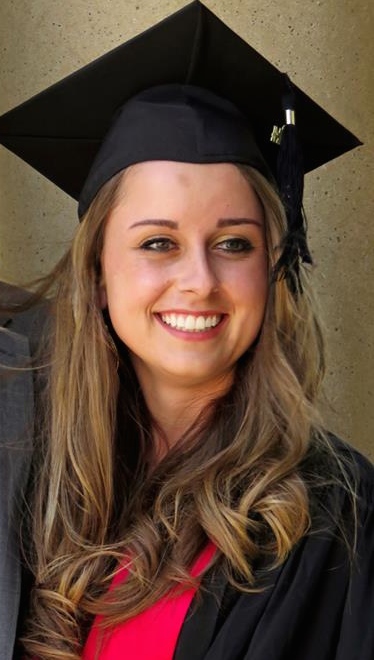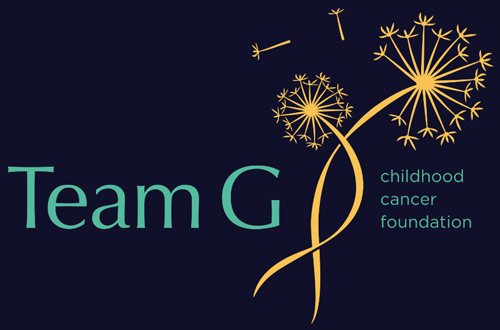“When I first received eight flasks of human cells in my research lab to study, I didn’t attach any significance to their labels: DIPG I through DIPG VIII. The head of my lab is a leading expert on Diffuse Intrinsic Pontine Glioma (DIPG), a very rare children’s cancer that has no known cure. I learned that we established the first cell line, and now possessed the most cell lines of DIPG in the country, if not the world. However, I soon realized what the labels meant. “Child who lost their battle to cancer number 1”… number 2… number 3… all the way up to child number 8.
I had been excited about a career in medicine since high school, but my commitment solidified when I took a class in my freshman year at Stanford called ‘Intracellular Trafficking and Neurodegeneration,’ or, in layman’s terms, diseases that result from the brain losing the ability to function properly. I decided to get involved in research to explore my interest in the brain, and applied to work in a pediatric neuro-oncology lab. Miraculously, the head of the lab accepted me as a research assistant. I began what would be three years of life-changing work with my newfound mentor.
In the lab, I ran experiments on the DIPG cells to see which protein markers they expressed to try to discover anything new about the disease. The goal was to search for strategies to target the cells, make them grow slower, and hopefully kill them. All the while, I knew that the numbers on the flasks correlated to names. Names correlated to smiles; to laughs; to personalities; to families. And families correlated to heartbreak. I couldn’t bear to think about the families while having no power to comfort them. I wanted, more than anything, to learn the names of the children, reach out to their families, tell them how hard I was working to make sure their child’s death was not in vain, and to ease their pain even the slightest bit.
So I tried. I worked as a counselor the following summer at a fantastic organization called Camp Okizu, a camp designed specifically for pediatric cancer patients and their families. Among many other incredible and resilient children, I met Gabriella, her sister Bridget, and their parents Adam and Kristin. Gabriella was five, and undergoing treatment for rhabdomyosarcoma at the time. I connected with her immediately, and had the sweetest little shadow for the remainder of camp.
I kept in touch with Gabriella and her family, and met them at Lucile Packard Children’s Hospital for some of her treatments throughout the subsequent months. Her family’s optimism, kindness, and resilience inspired me. When Gabriella’s mom Kristin asked if I would like to serve as a founding board member for a non-profit designed to fight childhood cancer, I could not have been more thrilled. We started Team G Childhood Cancer Foundation, which provides direct support to newly diagnosed cancer families and financial support for pediatric cancer research much like the research I was involved in at school. This organization quickly became a defining part of my passion for medicine, and has connected me to the world of childhood cancer in a way that I never could have imagined. I now follow the Facebook pages of dozens of families fighting childhood cancers. I’ve met countless parents with children who have beaten, who are fighting, and who have lost their battles to cancer. I now know their children as names, not numbers.
Touching the lives of families battling pediatric cancer even if in very small ways, has been such a powerful experience. I had the opportunity to help make their children happy at Camp Okizu by playing and laughing with them. I was a small part of sending Hope Totes from Team G to newly diagnosed families around the country. I followed and supported families via social media almost every day, and through working in my lab at Stanford have been able to directly contribute to the progress towards curing DIPG. After working in the lab for a couple years, I thought I had figured out how to cope with working with de-personified numbers. Then one morning, I checked Facebook and saw that an adorable little girl had lost her battle with DIPG. I was devastated, angry, and heartbroken, imagining the pain that her family was going through.
When I got to work at my lab later that day, I set down my bag, turned around to sit at my bench, and saw countless containers of human brain tissue samples being prepared for processing for cell cultures. My co-workers informed me that we’d received an overnight DIPG tissue donation. My heart sank. At that exact moment, I witnessed a name become a number. “DIPG XII” was written on each container, but I knew the name associated with this number, without a doubt. My fears were confirmed when the head of my lab shared a note with the lab from this little girl’s mom. It read: “I believe in you. Beat this thing.”
Those words have stuck with me since that day, and I’ll remember them for the rest of my life. I wished for a name. I got that and so much more. I have Gabriella and her family, I have Team G, I have connections to the childhood cancer community, and I have meaning behind a number. I don’t see the cells in the lab as just cells anymore. I see them as children who want to keep fighting for other children’s lives. My role is to help them. To all of the families that will fight, are fighting, or have fought cancer: we will beat this thing.”
-Sarah Miller, Stanford Graduate Class of 2014
Team G Childhood Cancer Foundation “Founding Member and Board of Directors”

